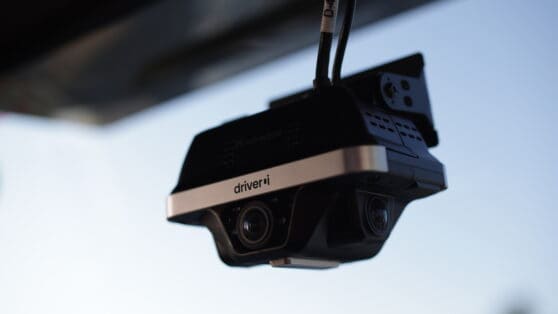With today’s pandemic-fueled uncertainty about the economy and health of loved ones, we can easily fall in to reactive mode – dousing fires as they come up. If you’re able to mitigate the fires and have time to step back, there are resources available and actions you can take to help manage business challenges and position well for the future. Insurance exists to protect you, so it’s a great time to review the details of your coverage and take actions to make sure you’re protected.
1. Become familiar with your current policy
It’s common for companies to rely on industry norms, third-party coverage requirements, and advice of their brokers to define coverage limits and inclusions. It’s not surprising given the complexity of most insurance policies, that we become familiar with the details only when an incident occurs. This has reigned true recently as many businesses sought to file claims for business interruption, only to find out that most policies have a virus exclusion. Their businesses were shuttered by government mandate and their safety net unavailable. Understanding your coverage can help to guide your decisions in uncertain times.
Knowing the ins and outs of your policies is also important if you plan on taking advantage of federal assistance. Some of the programs require spend on specific expense categories in order to qualify or be forgiven in the future. Spend of such funding may also be audited to ensure you’re not double dipping with insurance and government programs.
Generally, during these times “knowledge is power” meaning that you can more quickly and easily take advantage of assistance whether it’s your insurance or government programs if you have clarity about your current status.
2. Make sure your insurance coverage is keeping pace with your business
Entire sectors of the economy are suspending operations while others are struggling to keep up with demand. As your business adapts to the new environment, work with your agent or broker to ensure you’re properly covered. Some topics you might want to consider discussing:
- Are there any new contracts in place that need to be added as Additional Insureds?
- Are you travelling in new geographies?
- Are you hauling different goods – anything that impacts your cargo coverage
- Are you adding leased vehicles or additional drivers?
- Has your fleet grown or reduced in size?
- Have you implemented technology or programs to better manage your risk?
Like many service providers today, insurance companies are doing their best to roll with the changes. Keeping them in the loop about your situation is the best means to staying protected.
3. Keep engaged with your broker
While your broker likely hasn’t experienced a pandemic, they are most familiar with policies, procedures and processes within their own lines as well as the insurance ecosystem. They can keep you apprised of updates and advise on how to deal with your specific situation. They’ll also know if there are any programs or considerations for premium payment deferrals or reductions.
It’s also a good idea to stay connected so you’re top of mind as changes occur that may impact your business. In times like these your broker can serve as an educator, adviser and advocate as they likely are dealing with multiple clients in similar situations like yours. They can be your best resource for helping to interpret the details and nuances of your policy and provide options for managing business challenges.
If this pandemic follows the same path as other disasters, there may also be changes to insurance regulations that affect your coverage, if not your business as a whole, so staying informed and having an advocate in the industry can be beneficial as the situation evolves. So, sign up for newsletters, webinars, and keep in touch with your broker.
4. Continue to make safety a priority
Though the FMCSA has relaxed Hours of Service and licensing regulations, insurance companies are not likely to change the way they rate based on current frequency — severity models and nuclear verdicts continue to be a reality. And as always, the government regulations do not protect you from lawsuits and litigation. Most carriers have invested years developing safety programs and practices based on the principle of “live and learn” as well as integrating industry best practices. It’s important to maintain and continuously improve these practices.
- Conduct driver safety meetings: Meetings are a great tool to promote good practices, communicate focus and reassure drivers that they’re doing the right thing. Take advantage of many great new tools to hold such meetings through smartphones and tablets.
- Reinforce good driving habits: While drivers are being recognized as heroes for their commitment to keeping the country supplied with essentials, they should also be recognized for their skills and professionalism. AI-based safety monitoring tools can help point out when drivers are at the top of their driving game.
- Focus on the fundamentals: With less congestion on the roads and demand for consumables high, drivers have a bit more freedom to drive as they wish. At the same time, there can be a significant amount of stress, so nitpicking every behavior might not be welcome. Identify where you want to focus and be consistent in coaching performance vs. reprimanding triggered behaviors.
- Provide drivers tools to manage their own performance: Often times drivers aren’t aware that they could use a brush-up on their skills. Visibility to individual driving performance prompts drivers to adjust their behavior on their own and helps develop good habits over the long run. With mobile performance coaching apps, drivers have access to real-time information about how they can improve their score. How well do they work? Netradyne reports that their Driveri customers that have the majority of their drivers using the mobile app (70% or more) have average fleet safety scores 10% higher than their peers. Scores are also shown to increase even further when drivers compete based on their scores and managers coach and reward performance.
5. While social/physical distancing, prioritize communication with drivers
Under normal circumstances, drivers spend a lot of time on their own while on the road. Now, with less passenger vehicles on the roads, closed and deserted retail establishments and overwhelmed authorities/first responders, they are more alone than ever. While consumers are hoarding toilet paper, drivers are struggling with gaining access to restrooms, food, and a safe place to rest. As drivers need to be more self-reliant, it’s important to acknowledge that they are distant but not alone.
Taking time to engage with drivers can understandably fall by the wayside as management and dispatchers are trying to get drivers in seats, dealing with delays, and tracking the supply chain.
Technology can help to provide insight and a heads up to management about the state of a driver. For example, a safety solution like Driveri analyzes 100% of driving time and provides real-time feedback and information about driving performance. Throughout the day, information from the system can be used to:
- Thank a driver for a job well done: The system identifies and alerts managers when a driver makes a smart, defensive driving move or exhibits exceptional driving.
- Proactively address a change in performance: With real-time updates to driver scores, safety managers can receive an alert when there is a drastic change in score. When this happens, managers can reach out to check in on a driver to asses whether the driver needs assistance.
- Assist drivers in need: Alerts can be sent in near real-time when an accident occurs. Early notification from the system can prompt a safety or driver manager to send assistance with help from the GPS location.
Managing fleet risk can be difficult during during “normal” times. Where it seems that so much is beyond control during these extraordinary times, with some focus and support, you can continue to protect your drivers and position your fleet for future success.






